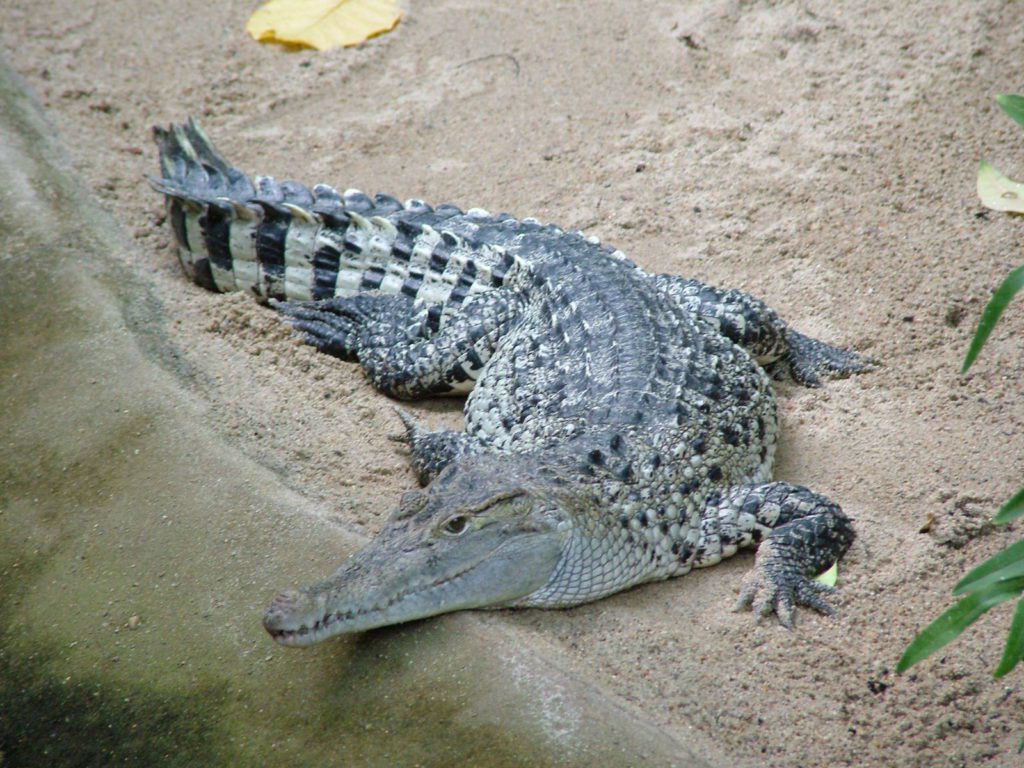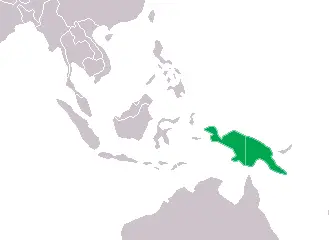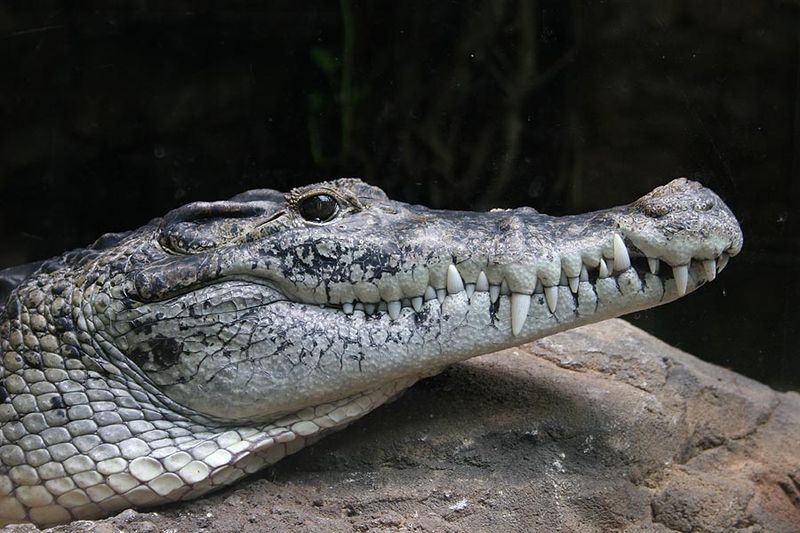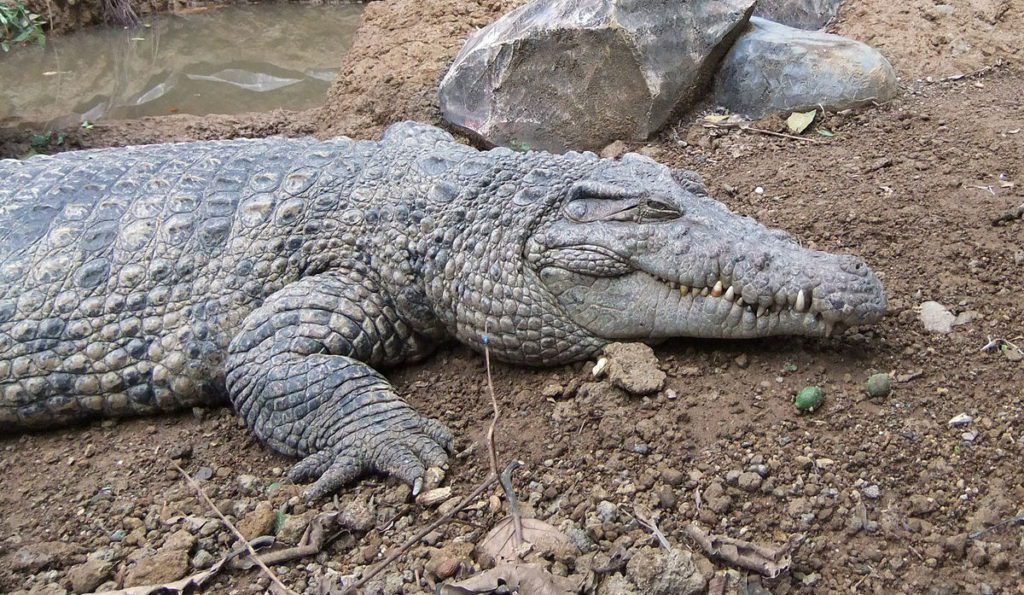New Guinea Crocodile (Crocodylus novaeguineae) – one of the least known, but very interesting representatives of the family of true crocodiles (Crocodylidae). Its natural habitat swamps, rivers and lakes of New Guinea - one of the largest islands in the world, located between Australia and the Pacific Ocean.
This species impresses with its adaptability, unique way of reproduction and significance in the culture of local peoples. Its population still remains stable, although it is threatened. habitat destruction and illegal hunting.
Explore all the features of the life of this amazing crocodile: appearance, behavior, ecology, nutrition, reproduction, and current population status.

Scientific classification
🔬 Taxonomy of the New Guinea crocodile:
✔ The Kingdom: Animals (Animalia)
✔ Type: Chordal (Chordata)
✔ Class: Reptiles (Reptilia)
✔ Row: Crocodile-like (Crocodylia)
✔ Family: Real crocodiles (Crocodylidae)
✔ Gender: Crocodiles (Crocodylus)
✔ View: Crocodile of New Guinea (Crocodylus novaeguineae)
📌 Interesting!
In the 1990s, there were suggestions that in fact there are two separate species of New Guinea crocodiles – North and Southwhich live in different ecological conditions.
Origin and history of the discovery
🕵 Who discovered the New Guinea crocodile?
* The species was described in 1928 by German zoologist Markus Friedrich Schmidtwho discovered it in what is now Papua New Guinea.
* It was originally considered a subspecies crested crocodile (Crocodylus porosus), but later it got the status a separate type.
📌 Interesting!
Archaeological findings prove that this crocodile has lived on the island for more than 8,000 years.
Appearance and features
💠 What does a New Guinea crocodile look like?
• Length: Males grow to 3 meters, although some individuals reached 4 meters.
• Weight: On average 150-250 kg.
• Color scheme: Dark brown or gray, with dark spots along the body.
• Chairman: Narrow, like a head nile crocodile (Crocodylus niloticus).
• Teeth: It has 66-68 sharp teethadapted for tearing meat.
• Tail: Very strong, which allows it to develop high speed in the water.
📌 How is it different from a crested crocodile?
✅ Smaller size - the crested crocodile can reach up to 7 meters.
✅ Narrower muzzle - adapted to fishing.
✅ It has clearly defined dorsal scaleswhich the crested crocodile does not have.

Range and habitat
🌍 Where does the New Guinea crocodile live?
It inhabits exclusively on the island of New Guineawhat is shared between:
• Indonesia (provinces of Papua and West Papua)
• By Papua New Guinea
🔹 Where can you find it?
✅ Rivers and swamps Northern and southern parts of the island
✅ Freshwater lakes
✅ Mangrove forests
📌 Interesting!
Northern and southern populations are separated mountain rangewhich prevents them from contacting each other.

Lifestyle and behavior
🔹 Hunting and nutrition
• What does it eat?
Fish-the main diet
Amphibians (frogs, salamanders)
✅ Small mammals (rodents, kangaroo rats)
✅ Waterfowl
📌 Interesting!
New Guinea crocodile most active at nightHunting in the dark for help sharp vision and sensitive sensors on the skin.
Reproduction and development
💡 How does the New Guinea crocodile breed?
* Females build nests made from vegetation and soil.
* Procrastinate 20-40 eggs.
* Incubation continues 75-85 days.
* Temperature determines the sex of the cubs:
✅ Higher temperature – males
✅ Lower temperature – females
📌 Interesting!
New Guinea crocodile – the only species that lays eggs in the dry seasonwhile other crocodiles do this during the rains.

Threats to the species and their protected status
⚠ What threatens the New Guinea crocodile?
• Destruction of swamps and mangroves.
• Illegal hunting for leather.
• Competition with the crested crocodile.
🛡 Security status:
, Entered in IUCN Red List how "Least Risk" (LC).
Охота Hunting is restricted in most regions.
📌 Interesting!
In some parts of New Guinea local tribes breed these crocodiles in special reservoirs for use in traditional rituals.
Conclusion
New Guinea crocodile – a unique representative of your familywhich has adapted perfectly to life in the tropical waters of New Guinea.
💡 Basic facts:
✔ Smaller than the crested crocodile
✔ It is active at night and feeds mainly on fish
✔ It lives only on the island of New Guinea
✔ It has a stable population, but is under threat of habitat destruction.
📢 This ancient predator remains a symbol of New Guinea's wildlife, and its future fate depends on conservation measures!